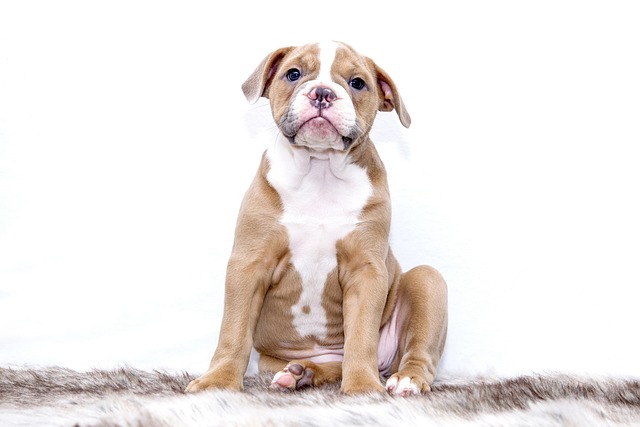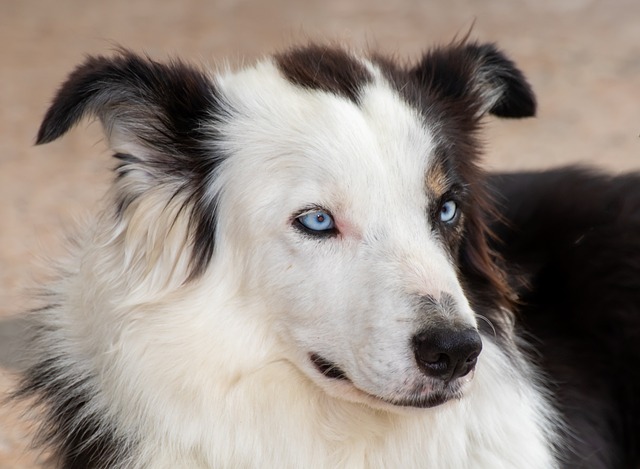
What is best for dogs' irritated skin
When we find that the dog's originally smooth and healthy skin shows symptoms of being irritated, such as redness, itching, and flaking,
When we find that the dog's originally smooth and healthy skin shows symptoms of being irritated, such as redness, itching, and flaking, the feeling of distress instantly spreads. They can't express their pain with words and can only convey their skin discomfort through scratching, rubbing against the ground, or looking listless. As owners, we wish we could immediately relieve their pain and are eager to know what the best choice is for taking care of the dog's irritated skin. From professional pet dermatology knowledge to daily care full of love, every effective nursing method carries our deep concern and love for the dog, hoping to restore their skin to health and vitality.
The dog's skin is more fragile than that of humans. The skin under the hair has a weakly alkaline pH value, and its thickness is only about one-third of that of human skin, making their skin more vulnerable to external stimuli. Understanding the basic structure and characteristics of the skin is the foundation for choosing the appropriate nursing method. The dog's skin is composed of the epidermis, dermis, and subcutaneous tissue. The stratum corneum in the epidermis acts as a barrier to prevent water loss and the intrusion of external substances. Once this barrier is damaged, problems such as dryness, itching, and inflammation will occur on the skin. There are various reasons for the dog's skin to be irritated, such as exposure to allergens like pollen and dust mites, being bitten by fleas and mites, or being infected with bacteria and fungi. Even drastic changes in environmental temperature and humidity can make their skin overwhelmed. Every time we see the dog feeling uncomfortable due to skin problems, we secretly make up our minds to find the most effective nursing method to protect their skin health.
Cleaning is the first step in nursing the dog's irritated skin, and choosing the right cleaning product is crucial. Ordinary human bath products are not suitable for dogs because their pH value does not match that of the dog's skin, and they are likely to damage the natural barrier of the skin. Mild bath products specially designed for dogs are the ideal choice, especially those containing natural ingredients such as oats and aloe vera. The β-glucan and various antioxidants rich in oats can form a protective film on the skin surface, lock in moisture, and relieve itching and inflammation. Aloe vera has powerful anti-inflammatory, moisturizing, and repairing effects, which can soothe the irritated skin and promote the regeneration of damaged cells. When bathing the dog, keep the water temperature at 38 - 40°C, close to their body temperature, to avoid the skin being irritated by water that is too hot or too cold. Gently rub the hair and skin to ensure thorough cleaning, but avoid over-cleaning to prevent excessive removal of skin oils and damage to the normal physiological function of the skin. When we clean the dog's skin with mild bath products and watch them gradually relax in the water, we seem to feel their discomfort gradually reducing, and we are full of expectations, hoping that this cleaning can start the skin's recovery well.

Topical care products can directly act on the irritated skin and provide strong support for repair. Pet-specific skin repair sprays are convenient and practical choices. These sprays usually contain ingredients such as hyaluronic acid and ceramides. Hyaluronic acid has a powerful moisturizing ability and can quickly replenish moisture to the skin, relieving dryness. Ceramides can repair the barrier function of the skin and enhance the skin's resistance. Gently spray the repair spray on the irritated area of the dog's skin and then gently massage with clean fingers to help the skin absorb, which can effectively relieve the discomfort. Some dogs may be sensitive to the smell of the spray. We can choose odorless or lightly scented products and test them on a small area of the skin before use to observe if there are any adverse reactions. In addition, skin repair creams are also good choices. For locally damaged and ulcerated skin, repair creams containing ingredients such as petrolatum and zinc oxide can form a physical barrier, isolate external stimuli, and promote wound healing. When we carefully apply the repair cream to the dog's injured skin and watch them quietly accept the care, our hearts are full of distress, and we only hope that these care products can make their skin get better as soon as possible.
Adjusting the diet also plays a key role in the recovery of the dog's irritated skin. Providing the dog with nutritious food, especially those containing Omega-3 and Omega-6 fatty acids, can improve the skin condition from the inside. Omega-3 fatty acids have powerful anti-inflammatory properties and can reduce the skin's inflammatory response, relieving redness, swelling, and itching. Omega-6 fatty acids help maintain the moisture and elasticity of the skin and promote the renewal of skin cells. Salmon, flaxseeds, and other foods are high-quality sources of Omega-3 fatty acids. We can steam the salmon, remove the fish bones, and feed it to the dog, or add an appropriate amount of ground flaxseed powder to the dog food. At the same time, it is very important to ensure that the dog intakes enough protein, vitamins, and minerals. Protein is an important component of the skin and hair, and antioxidants such as vitamin A and vitamin E can promote the repair and regeneration of the skin. When we watch the dog eating these nutritious foods with relish, we are full of expectations that these nutrients can nourish their skin from the inside out and gradually restore the irritated skin to health.
During the period when the dog's skin is irritated, creating a comfortable and safe living environment for them cannot be ignored. Keep the living environment clean and hygienic, regularly clean the dog's bed, toys, and other items to prevent the breeding of bacteria and mites. Control the indoor temperature and humidity to avoid the environment being too dry or wet, because extreme environmental conditions will aggravate the skin discomfort. In addition, put an Elizabethan collar on the dog to prevent it from scratching and licking the irritated skin and avoid secondary injuries or infections. Watching the dog gradually recover in the environment we have carefully arranged, changing from being restless at first to gradually relaxing, our worried hearts gradually settle down, knowing that our efforts are gradually paying off.
The dog's irritated skin is like an angel with broken wings, and we need to use professional knowledge, warm care, and careful nursing to help it regain health. From choosing the right cleaning products and topical care products to adjusting the diet and creating a comfortable environment, every link embodies our deep love for the dog. One day, when we see the dog's skin become smooth and healthy again and it can run and play happily, all the efforts will turn into full happiness and satisfaction. Because in our hearts, the health and happiness of the dog are worth protecting with all our efforts, allowing them to enjoy every beautiful day under our care.

When we find that the dog's originally smooth and healthy skin shows symptoms of being irritated, such as redness, itching, and flaking,

When we see our dog, which used to have smooth fur and be lively and active, constantly scratching due to dry and itchy skin,

When you find that your usually lively and cute dog frequently shakes his head, scratches his ears with his paws, or even has redness, swelling, and odor in his ears, you will feel worried and distressed.

When the cold wind brings ice and snow to the window lattice, humans can resist the severe cold by adding clothes and keeping warm. Dogs, who cannot speak, can only convey their perception of the cold through subtle changes in their bodies.

Dogs chew toys, which may seem naughty, actually contain their unique physiological and psychological needs. Every chewing is their way of interacting with the world and a special "language" to convey information to their owners.

In the silent late night, it should be the time for sound sleep. However, when we find that the dog, which usually falls asleep as soon as it lies down,